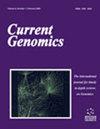Genome Sequencing and Organization of Three Geographically Different Isolates of Nucleopolyhedrovirus from the Gypsy Moth Reveal Significant Genomic Differences
IF 1.4
4区 生物学
Q4 BIOCHEMISTRY & MOLECULAR BIOLOGY
引用次数: 0
Abstract
Background: The gypsy moth (Lymantria dispar L., Lepidoptera: Erebidae) is a worldwide pest of trees and forests. Lymantria dispar nucleopolyhedrovirus (LdMNPV) belongs to the Baculoviridae family and is an insect virus specific to gypsy moth larvae. In this study, we describe the complete genome sequences of three geographically diverse isolates, H2 (China), J2 (Japan), and T3 (Turkey), of Lymantria dispar multiple nucleopolyhedrovirus (LdMNPV). Method: The genomes of isolates H2, J2, and T3 were subjected to shotgun pyrosequencing using Roche 454 FLX and assembled using Roche GS De Novo Assembler. Comparative analysis of all isolates was performed using bioinformatics methods. Results: The genomes of LdMNPV-H2, J2, and T3 were 164,746, 162,249, and 162,614 bp in size, had GC content of 57.25%, 57.30%, and 57.46%, and contained 162, 165, and 164 putative open reading frames (ORFs ≥ 150 nt), respectively. Comparison between the reference genome LdMNPV-5/6 (AF081810) and the genomes of LdMNPV-H2, J2, and T3 revealed differences in gene content. Compared with LdMNPV-5/6, ORF5, 6, 8, 10, 31, and 67 were absent in LdMNPVH2, ORF5, 13, and 66 were absent in LdMNPV-J2, and ORF10, 13, 31, and 67 were absent in LdMNPV-T3. In addition, the gene encoding the mucin-like protein (ORF4) was split into two parts in isolates H2 and T3 and designated ORF4a and ORF4b. Phylogenetic analysis grouped isolates H2 and J2 in a different cluster than isolate T3, which is more closely related to the Turkish and Polish isolates. In addition, H2 was found to be closely related to a South Korean LdMNPV isolate. Conclusion: This study provided a more detailed overview of the relationships between different geographic LdMNPV isolates. The results showed remarkable differences between groups at the genome level.舞毒蛾核多角体病毒三个地理上不同分离株的基因组测序和组织揭示了显著的基因组差异
背景:舞毒蛾(Lymantria dispar L.,鳞翅目:舞毒蛾科)是一种世界性的树木和森林害虫。异毒蛾核多角体病毒(Lymantria dispar nuclear polyhedrovirus, LdMNPV)属于杆状病毒科,是舞毒蛾幼虫特有的一种昆虫病毒。在这项研究中,我们描述了三个地理上不同的Lymantria dispar multiple nuclear polyhedrovirus (LdMNPV)分离株H2(中国)、J2(日本)和T3(土耳其)的全基因组序列。方法:分离株H2、J2和T3基因组采用Roche 454 FLX进行鸟枪法pyrosequencing,并用Roche GS De Novo Assembler进行组装。采用生物信息学方法对所有分离株进行比较分析。结果:LdMNPV-H2、J2和T3基因组大小分别为164,746、162,249和162,614 bp, GC含量分别为57.25%、57.30%和57.46%,包含162、165和164个推定开放阅读框(orf≥150 nt)。将参考基因组LdMNPV-5/6 (AF081810)与LdMNPV-H2、J2和T3基因组进行比较,发现基因含量存在差异。与LdMNPV-5/6相比,LdMNPVH2中缺失ORF5、6、8、10、31和67,LdMNPV-J2中缺失ORF5、13和66,LdMNPV-T3中缺失ORF10、13、31和67。另外,在分离株H2和T3中,编码黏蛋白样蛋白(mucin-like protein, ORF4)的基因被分成两部分,分别命名为ORF4a和ORF4b。分离株H2和J2与分离株T3在不同的聚类中,其与土耳其和波兰分离株的亲缘关系更近。此外,H2被发现与韩国的LdMNPV分离株密切相关。结论:本研究对不同地理LdMNPV分离株之间的关系提供了更详细的概述。结果显示,在基因组水平上,两组之间存在显著差异。
本文章由计算机程序翻译,如有差异,请以英文原文为准。
求助全文
约1分钟内获得全文
求助全文
来源期刊

Current Genomics
生物-生化与分子生物学
CiteScore
5.20
自引率
0.00%
发文量
29
审稿时长
>0 weeks
期刊介绍:
Current Genomics is a peer-reviewed journal that provides essential reading about the latest and most important developments in genome science and related fields of research. Systems biology, systems modeling, machine learning, network inference, bioinformatics, computational biology, epigenetics, single cell genomics, extracellular vesicles, quantitative biology, and synthetic biology for the study of evolution, development, maintenance, aging and that of human health, human diseases, clinical genomics and precision medicine are topics of particular interest. The journal covers plant genomics. The journal will not consider articles dealing with breeding and livestock.
Current Genomics publishes three types of articles including:
i) Research papers from internationally-recognized experts reporting on new and original data generated at the genome scale level. Position papers dealing with new or challenging methodological approaches, whether experimental or mathematical, are greatly welcome in this section.
ii) Authoritative and comprehensive full-length or mini reviews from widely recognized experts, covering the latest developments in genome science and related fields of research such as systems biology, statistics and machine learning, quantitative biology, and precision medicine. Proposals for mini-hot topics (2-3 review papers) and full hot topics (6-8 review papers) guest edited by internationally-recognized experts are welcome in this section. Hot topic proposals should not contain original data and they should contain articles originating from at least 2 different countries.
iii) Opinion papers from internationally recognized experts addressing contemporary questions and issues in the field of genome science and systems biology and basic and clinical research practices.
 求助内容:
求助内容: 应助结果提醒方式:
应助结果提醒方式:


